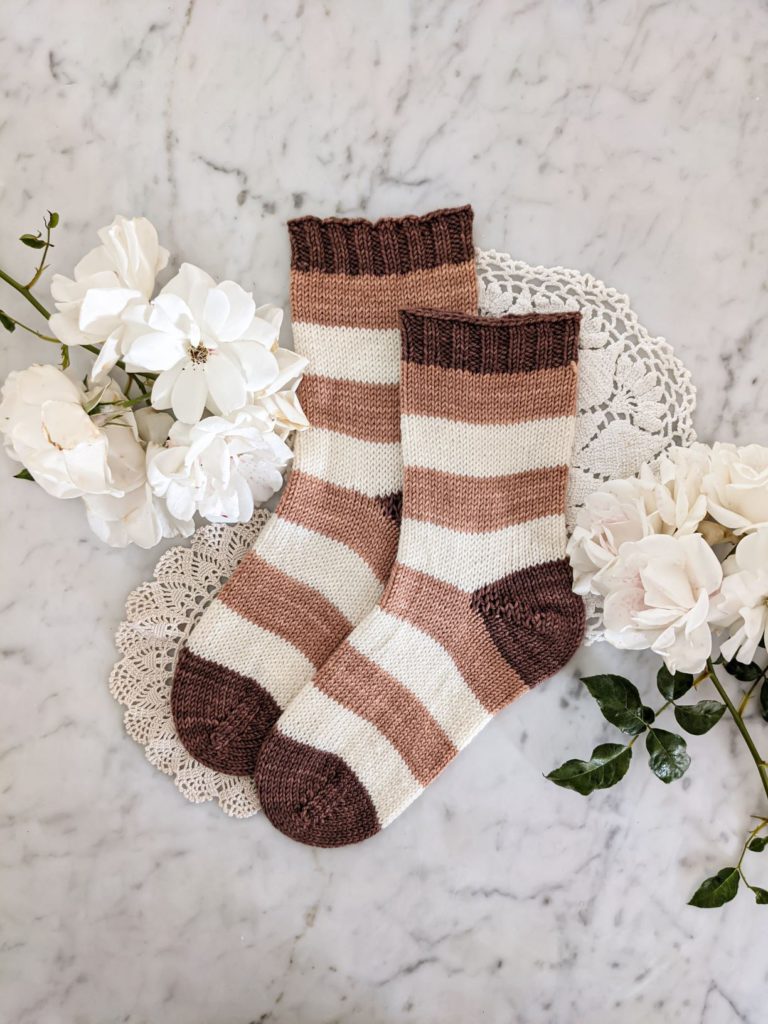
In case you missed it, I’ve been on a mission this month to learn to knit toe-up socks. I started with the cast-on and figuring how much yarn I needed, progressed to color changes with a helpful technique to avoid weaving in ends, and now I’m here, at the very end, experimenting to find the perfect bind-off for toe-up socks. It’s been an adventure.
If you’re looking to finish your own pair of toe-up socks, I have two recommendations for you. The bind-off I settled on was the elastic bind-off. I’m also, however, a fan of Elizabeth Zimmerman’s sewn bind-off.
I’ll also spend a little time in this post talking about why you need a special bind-off for toe-up socks in the first place. It’s not exactly intuitive, but if you use a standard, non-stretchy bind-off, you might not be able to get your socks on. That would be a pity after all the time you spent knitting.
So without further delay, let’s get into this!
Why Do You Need a Special Bind-Off for Toe-Up Socks?
The cuff of a sock sits at a crossroads. It has to be loose and stretchy enough to fit over your heel as you’re pulling it on. It also has to be snug enough to hug your calf and hold up the leg of the sock while you’re wearing it. That means you need to strike a balance in your cuffs.
With cuff-down socks, that’s not so difficult. You can cast on loosely, knit your cuff in a standard 1×1 or 2×2 rib, and carry on with your sock. No big deal.
With toe-up socks, though, you’re moving in the opposite direction, so instead of just using a stretchy cast-on, you need a stretchy bind-off. The standard bind-off most of us learn when we’re first knitting is pretty firm, to put it mildly. The knit two, slip the right stitch over the left, knit one, slip the right stitch over the left, repeat process? It’ll give you a very sturdy bind-off without much stretch. That’s great for edges where you’re going to be seaming or need it to hold up under wear.
It’s terrible for toe-up socks.
The Elastic Bind-Off: My Favorite for Toe-Up Socks
I did a little hunting around online and found several recommendations for toe-up socks. The doubled bind-off turned out to be my favorite. It’s a bit stretchier than
But here’s the biggest reason why I like it: it’s simple.
I’ve tried so many bind-offs that have a zillion steps in the process (I exaggerate, but only by a little). When I read the end of a sock, I am tired and ready to be done. I do not need a complicated process waiting for me before I can finish.
The elastic bind-off is very simple. Here’s all you need to do.
- Knit two stitches.
- Slip the left needle into the front of those two stitches.
- Knit the two stitches together through the back loop.
- Knit a stitch.
- Repeat steps 2-4 until you finish.
When I’m binding off a sock and get to the last stitch, I like to pick up one extra stitch at the beginning of the round to draw everything together. Then I bind off that extra stitch with the remaining stitch, break the yarn, and draw it through the final stitch. You can weave in your ends as usual.
Elizabeth Zimmerman’s Sewn Bind-Off: A Good Alternative
I use this bind-off for all of my fingerless mitts, and I like the amount of stretch it gives. I find, though, that it’s a little more fiddly than the elastic bind-off, which might not be something you’re interested in after finishing a sock (in the same way many people don’t like to graft a toe).
If you’d like to try this bind-off, here’s the video I learned from many, many years ago. It’s clear and easy to follow.
More Stretchy Bind-Off Ideas
To add a little bit of a decorative flair to your socks, you can also use the picot bind-off. This technique can be paired with ribbing, so your socks will still stay up but the cuff will be stretchy.
If you’re the sort who likes to experiment with lots of techniques before settling on a favorite, you might enjoy this blog post about more stretchy bind-offs from Susanna Winter. There are nearly as many ways to bind off as there are knitters in the world, so you’re sure to find something that works well for you.
If you’re also a toe-up sock knitter with a favorite stretchy bind-off, I’d love to hear about it! Which one do you use most often? What do you like about it? Drop me a note in the comments.
And of course, if you’re just starting out on your sock knitting journey, don’t miss my top 5 sock yarn recommendations.
Let’s stay connected!
Join my newsletter for 30% off all new releases, regular updates with helpful tips and tricks, first crack at registration for upcoming workshops, exclusive discounts, and more.
Join the A Bee In The Bonnet Facebook Group to participate in knitalongs and other fun community events
Come hang out with me on the A Bee In The Bonnet TikTok
Follow along on the A Bee In The Bonnet Instagram
Get inspired via the A Bee In The Bonnet Pinterest

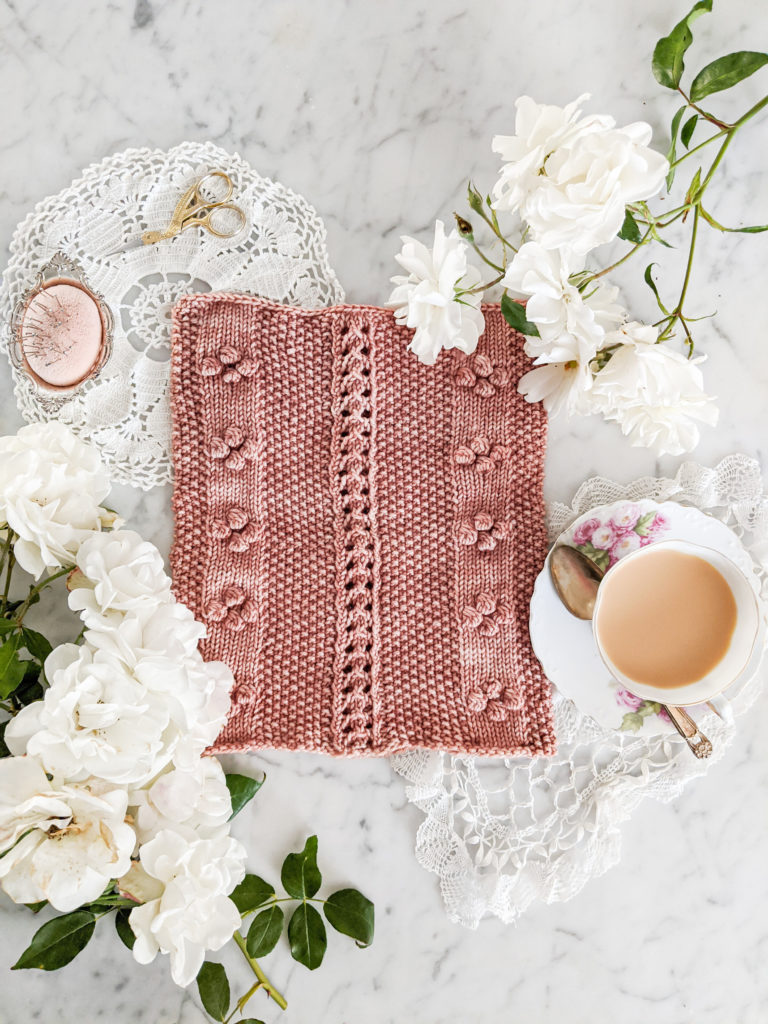
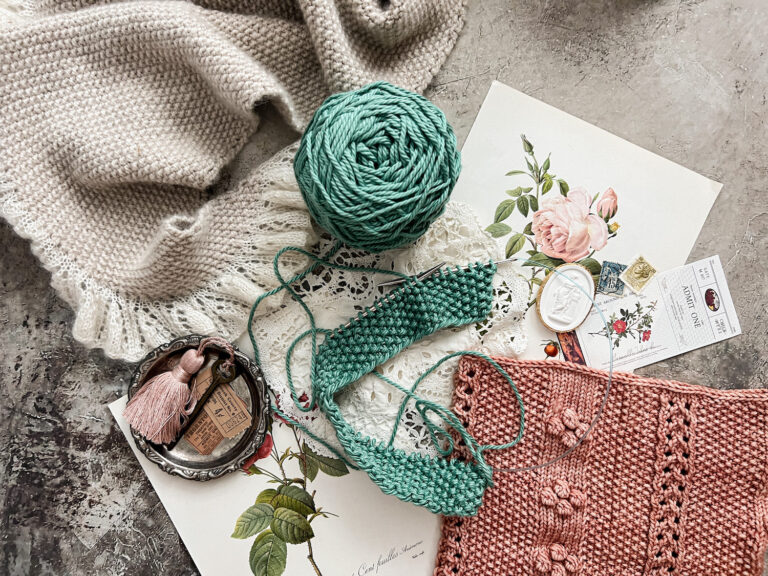
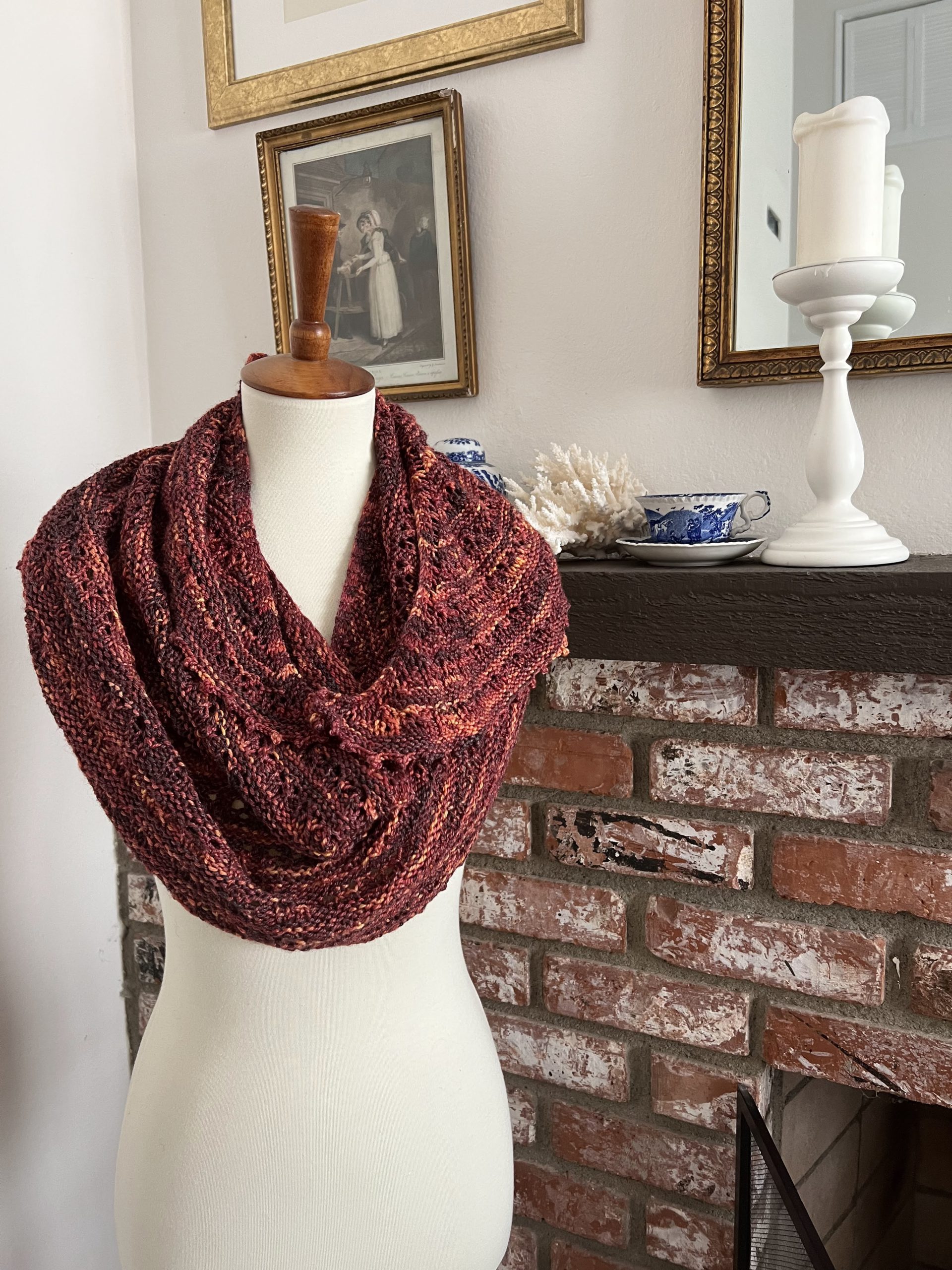
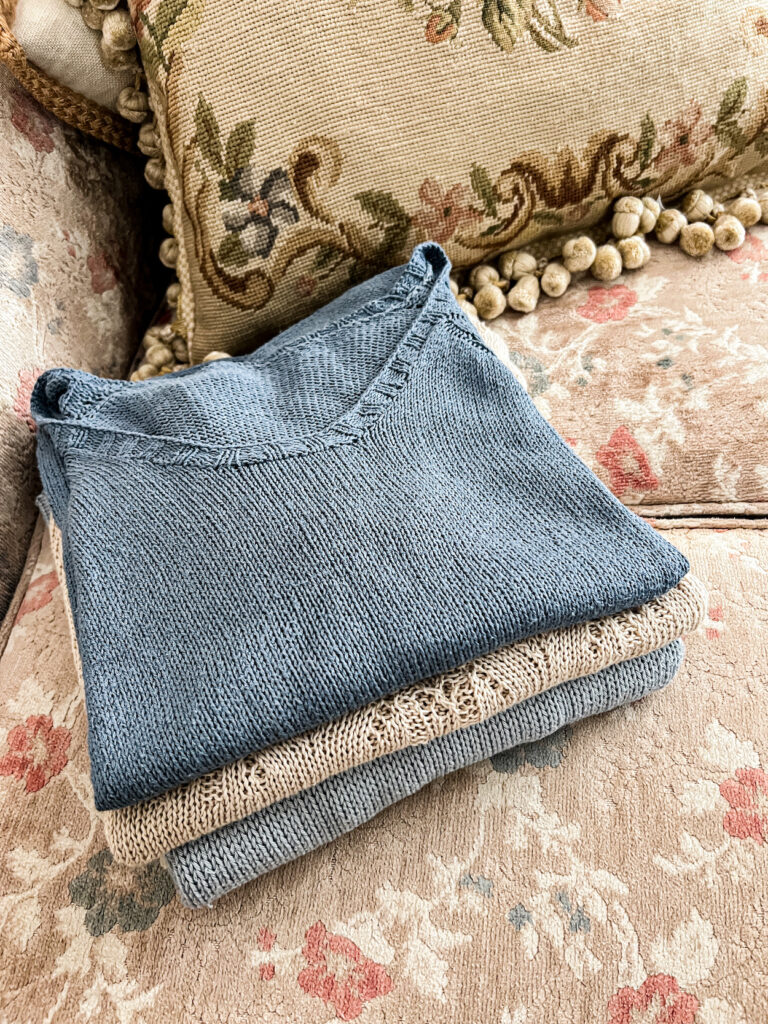

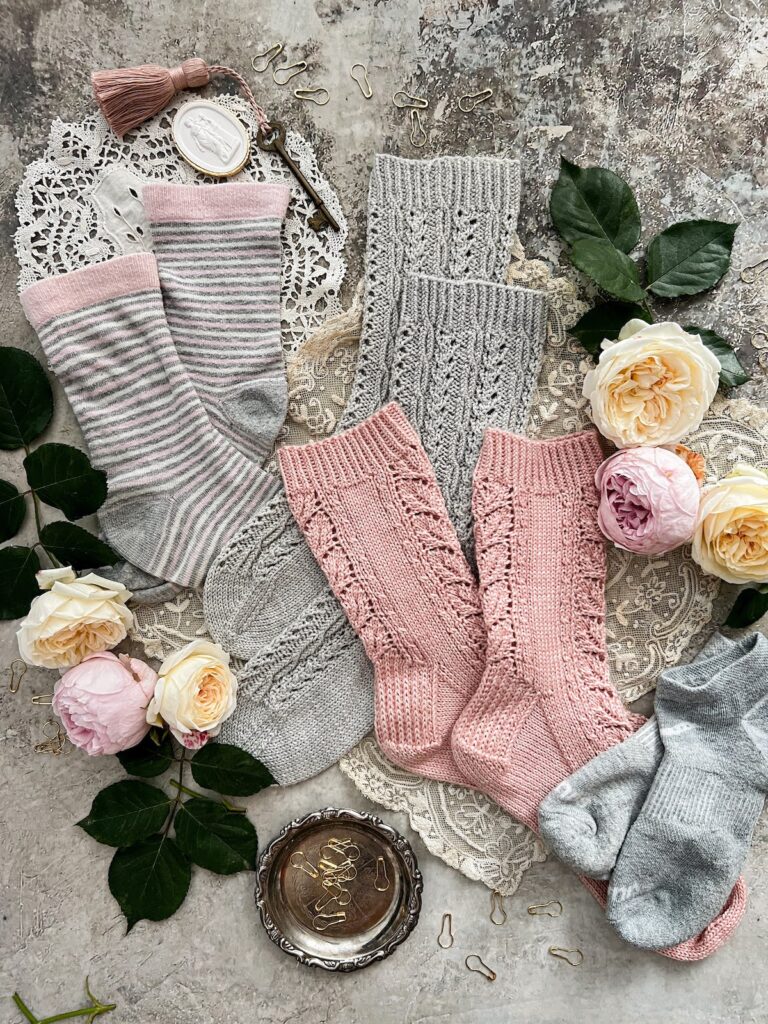
Thank you for this post- simple stretchy cast off for my Christmas stockings I’m knitting for the munchkins.
I do not have a favorite. I’m still searching, after 15 years of knitting and probably only 30 pairs of socks, I think I’ve tried as many cast-off as sock pairs, and none of them (until now) have made an impression.
I like this cast off; it’s substantial and sturdy and does not leave that weird lacy edge that stretches out TOO much! Plus you don’t have to knit that ‘row before the final cast off’ of awkwardly large stitches, either. You just decide you’re done and CAST OFF. Love it!
I’m so glad to hear this was a good fit for your needs! It’s always fun to see what criteria are important to different knitters and how they make adjustments to get something that works for them.
I absolutely LOVE your long and website! I’ve been knitting since I was 5 (and I’ll be 73 next month —but don’t tell anyone; I’m still trying to pass for 35!), and I was so happy to find your charming site. I have one non-knitting question: what is the China pattern of the blue and white cup with the Victoria Sponge hat? And I think it’s the same as the cup with the tea cozy; is that true? Appreciate your response—and all of your terrific knitting advice and charm! Happy holiday season to you and your family—Marla Shatkin
Ps I’m a hat/sock/cowl/baby clothes/blanket for the Grands knitter (7+ grandchildren 💞❤️🐑). Heartfelt thanks again for the name of the China pattern 💐